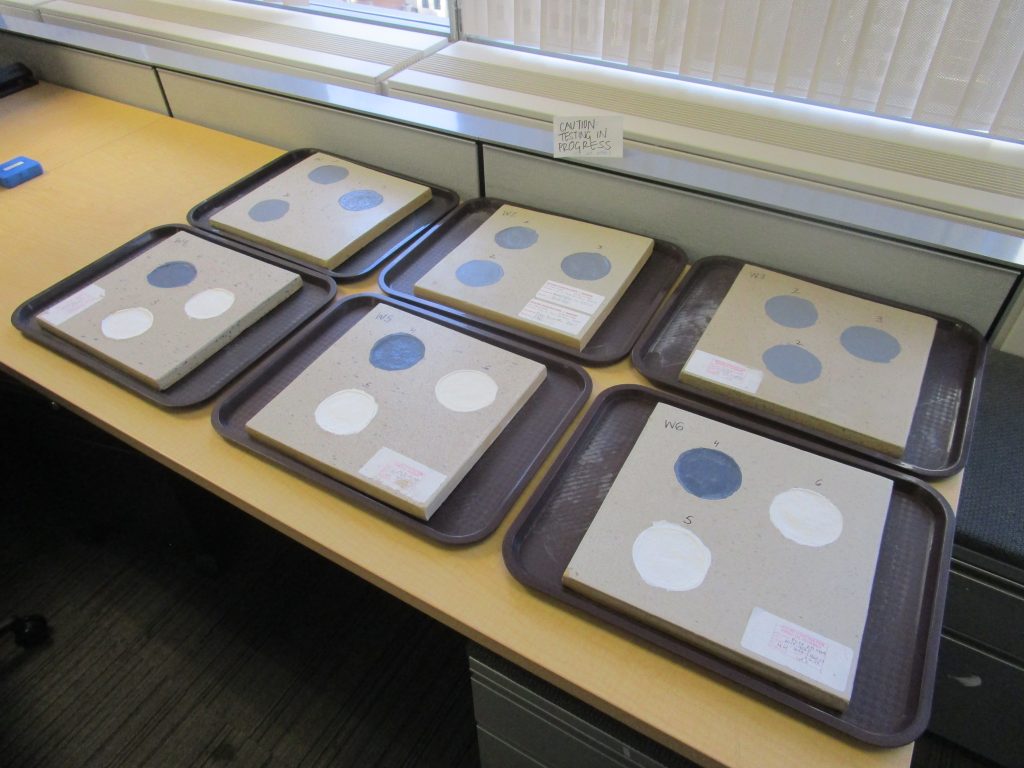Performance Testing of Coatings for Repairing Terra-Cotta Glaze Spalls

Traditional glazed terra-cotta blocks, as used in the United States for building cladding, typically consist of a high-fired bisque with an outer surface of a vitrified glaze. The glaze contributes to the water-penetration resistance of the overall cladding. As terra-cotta deteriorates over time, however, small areas of the glaze, or the glaze and a thin layer of bisque, may delaminate from the body of the terra-cotta blocks. These “glaze spalls” expose the underlying, more absorbent bisque to water infiltration and can cause further deterioration of the terra-cotta and corrosion of any embedded steel anchors. It is usually not economically feasible or desirable from a historic-preservation perspective to replace entire terra-cotta blocks whose only defects are glaze spalls. If these localized areas require treatment, the glaze spalls are typically repaired in situ with cold fluid-applied coatings.
A recurring challenge in terra-cotta restoration is the lack of durability from field-applied repair coatings. While numerous products on the market have performed well when applied to a dry terra-cotta substrate, in the authors’ experience none are consistently successful when applied over wetter substrates (Figs. 1–3). In real-world applications, it is often necessary to selected based on the authors’ recent project experience and conversations with a reputable local masonry contractor. The testing identified one coating system that shows promise for applications over wet substrates. However, the results are preliminary, and there is opportunity for future research and testing of other repair systems, varied testing environments (such as freeze-thaw), and numerical-based coating performance analysis to better determine the efficacy of these initial findings.
Publisher
APT Bulletin